Nortek Doppler Velocity Log, measuring Puma’s leeway across the pond
I learned that the Volvo Ocean Racer Puma had a very special speedo when the race started off around the planet last Fall, but was hoping that I or a Panbo guest blogger would get to see the other end of the system when the fleet visited Miami. Well, right now Puma is leaving Bermuda to starboard as it zips across the Atlantic toward Lisbon, and while Panbot Jeffrey Schwartz witnessed her Florida first place and did get some time with major VOR supporter Inmarsat, he was not able to wrangle his way into any racer’s nav station. But let me tell you what I do know about the Nortek Doppler Velocity Log…
The main thing to know is that the DVL measures a boat’s speed through the water both forward and sideways, using four ultrasonic sensors so sensitive they can track plankton. With those values plus SOG, COG, and Heading the mysteries of boat motion, and sail performance, are theoretically solved. Now this sort of thing has been around for a while — as in the JRC Doppler Sonar and some gear I once saw at Airmar HQ. But that gear is BIG while the Nortek DVL is quite small and was apparently faired into Puma’s keel so well that it has less drag than a paddle wheel sensor.
I learned that last bit from an excellent Sailing Anarchy video interview with Puma tech Rob Hopkins. He explains how valuable it is to measure leeway accurately, especially on a boat with both adjustable swing keel and dagger boards that can influence it…
But it’s a Wired Sports article that reveals: “Skipper Read is quick to point out that the DVL was just ‘one of a thousand factors’ that contributed to the crew’s victory, but nevertheless acknowledges the advantage granted by the previously top-secret device. With an exclusivity deal that prohibits Nortek from selling the technology to another Volvo team for the duration of this Ocean Race, the crew can sail assured that their edge will be preserved throughout.”
The question I’m sure some racers and other sensor geeks may have is if they can get a DVL for their boat and, if so, at what cost? But I don’t see any information about that at Nortek AS, which primarily specializes in fixed current meters. Anyone know more?
I’ll add that while I haven’t followed this Volvo Race as closely as some others, the online tracking is pretty sensational. And I did really enjoy some near-live video of the boats working their way through the Bahamas in flat seas and light airs (and still going fast). I can’t find those particular videos but this compilation of leg six is good, and even includes Puma skipper and rare VOR yank Kenny Read quoting Hunter Thompson: “When the going gets weird, the weird go pro!” Go Puma!


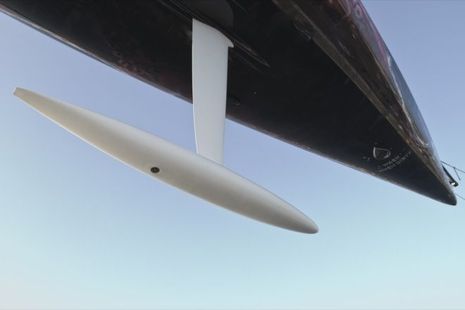
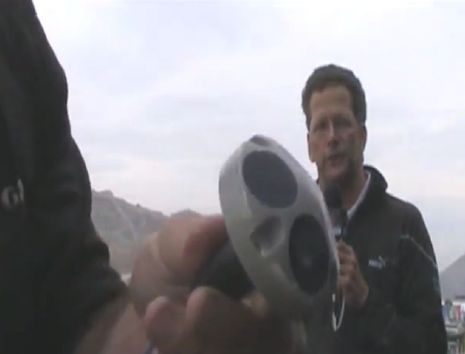
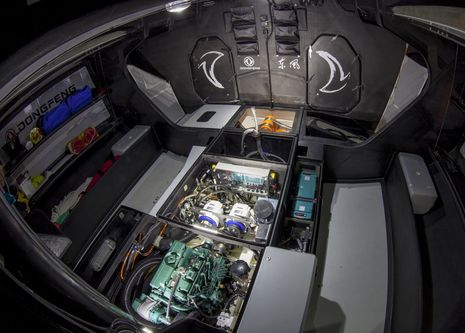
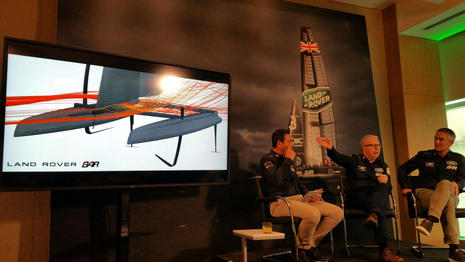
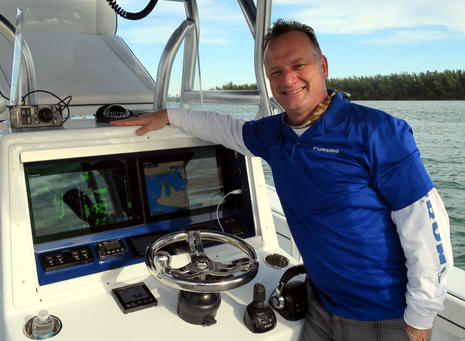
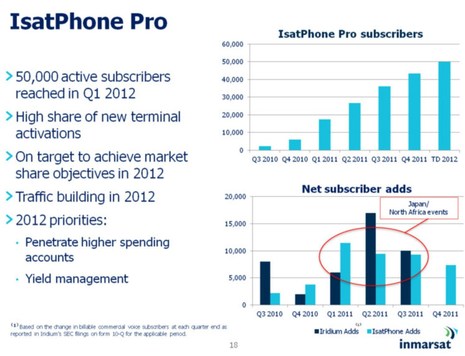








PS If you look very closely at the top photo you’ll see that some wag painted “wash when dirty” under Puma’s bow. Go Puma!
Here is someone building his own dopler device:
http://sailboatinstruments.blogspot.com/
He has 4 posts about this topic, so scroll down for more info
A very interesting comment from “hangglider007” showed up on the Yachtingmagazine.com version of this entry ( http://goo.gl/sSzUU )
There is a clarification that should be made – the Volvo Nortek device is actually an ADCP . Both an ADCP adn a DVL are the same sonar device, in essence. The difference is that an ADCP (Acousic Doppler Current Profiler) focuses on measuring water current speed relative to a platform or fixed point (e.g. “water in motion”), whereas a DVL (Doppler Velocity Log) focuses primarily on measurig velocity of a platform (in three axes also) vs. the sea floor or a water layer (i.e. “Motion in Water”) The Nortek device being used is a small high freqeuncy sensor, with very limited range, focusing primarily at currents near the boat, and integrated with other sensors to derive leeway and other vector velocities. The problem with the small head ADCP/DVL that Volvo is using is that the sensor size results in high standard deviation, meaning that its precision is limited. This is a function of sensor size, frequency, and what I wall call “mode”. As best I am aware, that model is using a narrowband detection mode. Broadband (to which Teledyne held the patents) is 50x more accurate. While I am not allowed to give any details, there are several other teams in both Ocean and Short distance racing who are in process of installing a much better sensor from Teledyne RDI. While the sensor is a bit larger in form factor, it is a broadband phased array which yields better measurement precision because of sensor size and operating mode. (I’m sure you will ultiamtely be hearing more about this from the winners of upcoming races!) A great advantage of the Phased Array is that it is a flat sensor surface to which a conformal “window” can be added, resulting in virtually no flow noise. If you’re interested in more details take a look at the “Explorer” DVL from Teledyne RDI.
http://www.rdinstruments.com/explorer.aspx
And speaking of wild modern sensor technology — that might be useful navigating — check out the Leap (thanks, Nat!):
http://www.leapmotion.com/